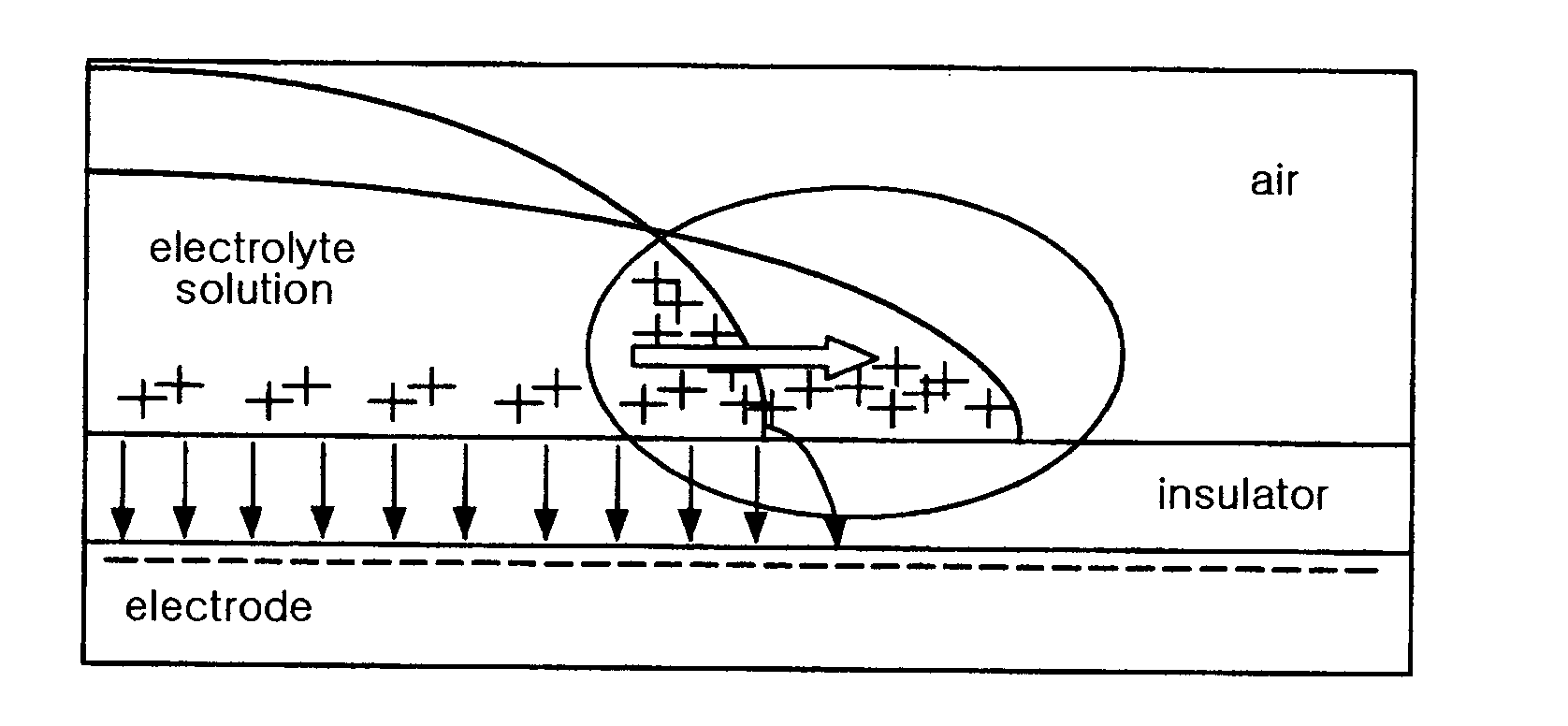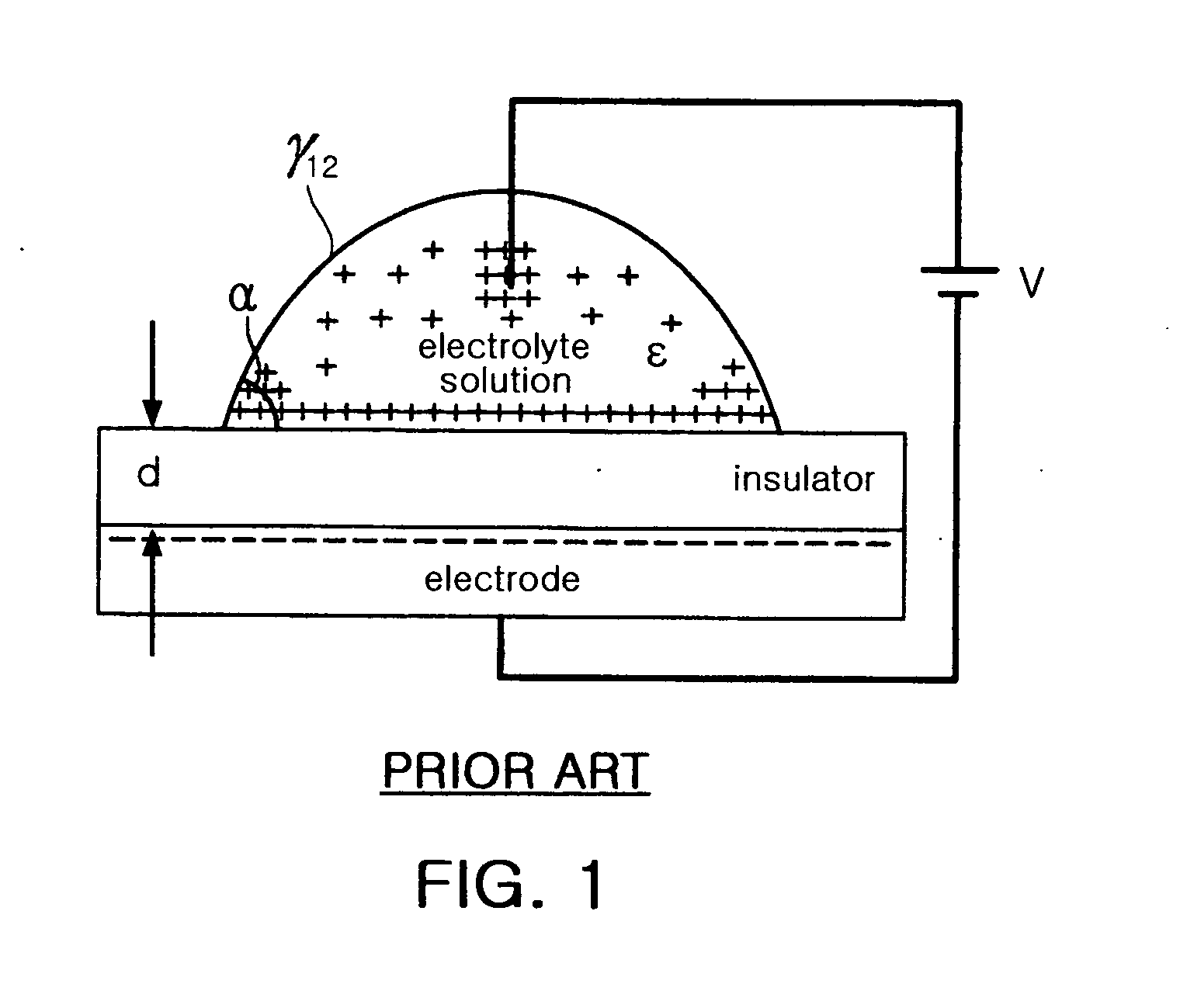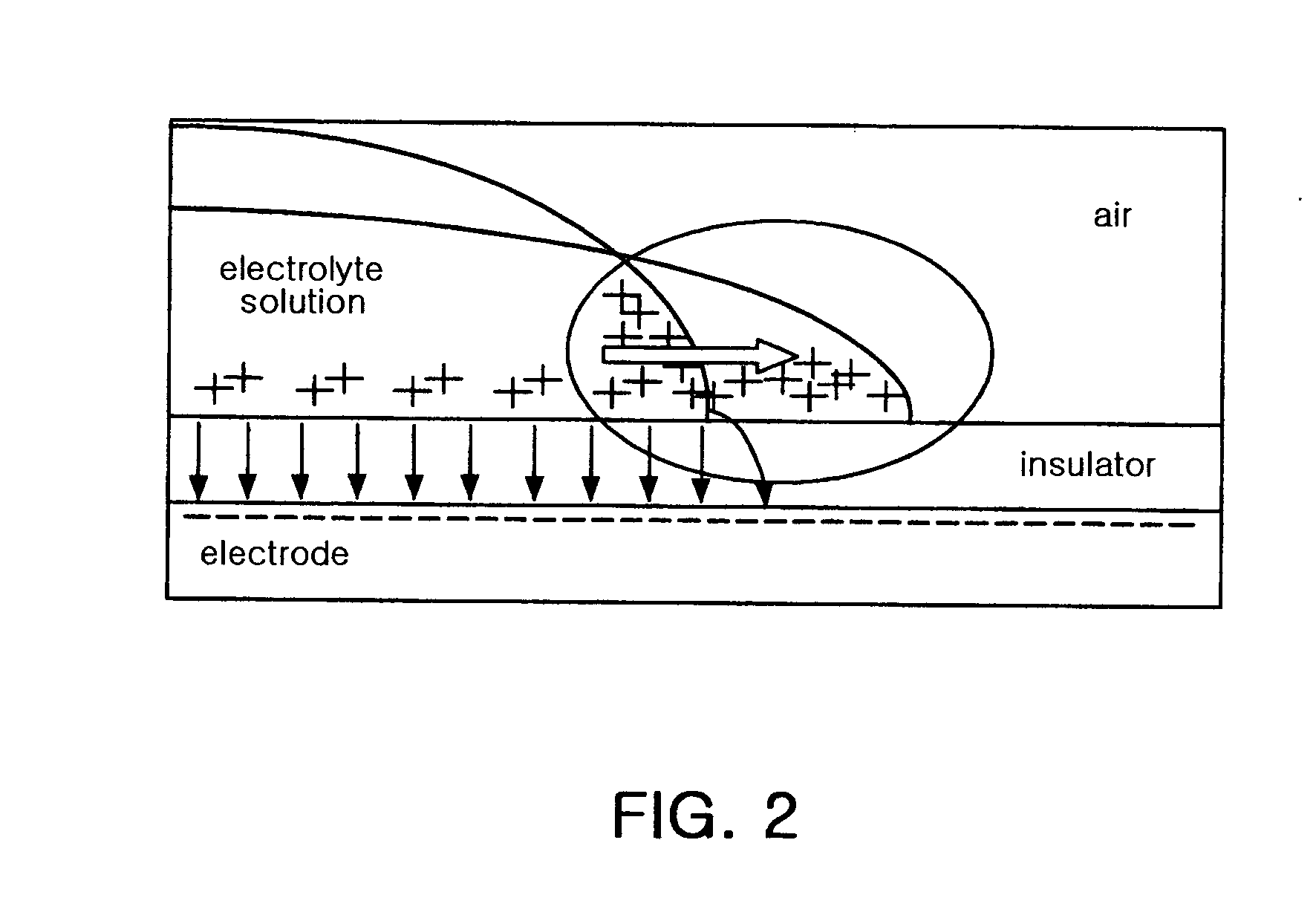Electrowetting system with stable movement
- Summary
- Abstract
- Description
- Claims
- Application Information
AI Technical Summary
Benefits of technology
Problems solved by technology
Method used
Image
Examples
example 1
[0048] 60% by weight of pure water, 10% by weight of LiCl and 30% by weight of 1,2-propanediol were mixed together to prepare a transparent electrolyte solution with a viscosity of 6.1. 1,6-Dibromohexane was mixed with a commercially available silicon oil to prepare an insulating solution with a viscosity of 11.8.
[0049] A cell for accommodating the electrolyte solution and the insulating solution comprises an upper part and a lower part. The upper part was made of a transparent material and an internal part of the upper part was coated with a metal film, through which a voltage was applied to the electrolyte solution. The lower part of the cell was made of the same material for the upper part, an internal part of the lower part in contact with the electrolyte solution was coated with a polymer insulator, and a metal film was coated under the insulator.
[0050] The electrolyte solution and the insulating solution were introduced into the cell to complete production of a liquid lens. ...
PUM
 Login to View More
Login to View More Abstract
Description
Claims
Application Information
 Login to View More
Login to View More - R&D
- Intellectual Property
- Life Sciences
- Materials
- Tech Scout
- Unparalleled Data Quality
- Higher Quality Content
- 60% Fewer Hallucinations
Browse by: Latest US Patents, China's latest patents, Technical Efficacy Thesaurus, Application Domain, Technology Topic, Popular Technical Reports.
© 2025 PatSnap. All rights reserved.Legal|Privacy policy|Modern Slavery Act Transparency Statement|Sitemap|About US| Contact US: help@patsnap.com



